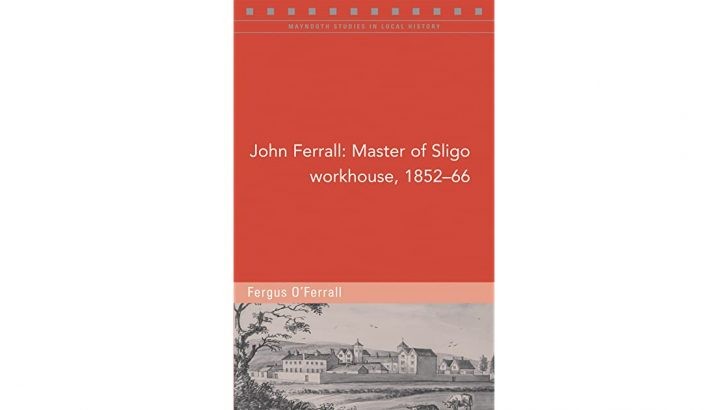John Ferrall: Master of Sligo Workhouse, 1852-66
by Fergus O’Ferrall (Four Courts Press, €9.95/£6.95)
This is a valuable account of the life and times of the master of a workhouse. It is a work of pietas. The author indicates that John Ferrall was the brother of his great-grandfather.
To care for the sick and indigent, known as ‘paupers’, workhouses were built in Ireland from 1840 onwards. They were designed by George Wilkinson and included a school for the children accommodated in the workhouse and a chapel for divine worship. Twenty-eight were built in Connacht with the one at Sligo opening its doors in 1841.
Appalling conditions
Mortality in the workhouse was high because of the impoverished circumstances and condition of those admitted and the appalling conditions of those institutions. During the Famine years the mortality rate in them was horrific. In the allocation of food, which was just at subsistence level, a distinction was drawn between the able-bodied, the infirm, children, infants and the sick. Those considered to be able-bodied were expected to work.
The Poor-Law Guardians, who supervised the workhouses, were also empowered to arrange the emigration of ‘deadweight paupers’ – single mothers, deserted wives and orphan children.
John Ferrall was born into a Church of Ireland farming-family in Ballymacormack, Co. Longford, on September 1, 1814. He secured a position as a teacher in the Protestant school at Moydow, near Longford Town, in 1836. A few years later he was appointed clerk to the Moydow Famine Relief Society which was established to bring relief to the Famine victims.
The object of the Society was to appeal to landlords and landholders to contribute to a fund to relieve “the labouring poor in their alarming situation”. As clerk, John was responsible for the distribution of meal and tickets for public works employment.
John next served as the master in the workhouse in New Ross in Co Wexford in 1848. At that time it was over-whelmed by the conditions created by the Famine and had acquired such a bad reputation that rather than enter it people travelled to Waterford or Dungarvan. Within a year he was dismissed – his dismissal was contrived it seems by the inmates who organised a riot to get rid of him because they claimed he “was too watchful”.
John was elected as master of Sligo workhouse along with his wife as matron in February 1852. With the return of near normal conditions he set about his multiple responsibilities. These included “the admission, registration and enforcing discipline on paupers” as well as overseeing their employment, clothing, cleanliness and health.
He was also responsible for the workhouse account books, daily diet books as well as the proper ordering and reception of all provisions to the workhouse. Furthermore he was responsible for the staff employed by the Board of Guardians and for the maintenance of the buildings under the control of the Guardians.
Ferrall was forced to resign in December 1863. Within a year he was re-appointed”
The day-to-day running of Sligo workhouse was discussed at weekly meetings of the supervisory Board of Guardians. These discussions were recorded in the local press. Complaints about the master from disgruntled members of the staff were invariably given an extensive airing in the press.
As a result of on-going disputes with members of the staff, Ferrall was forced to resign in December 1863. Within a year, however, he was re-appointed. Eventually he finally left the service on his appointment as a rate collector in Sligo in August 1866. He emigrated to the US in 1873, where he died in 1892.
Historians have not been kind to the masters of the workhouses. However, as is evinced by this sympathetic but fair biography, they had to face unprecedented and well-nigh insuperable challenges even in the times apart from the Famine years.



